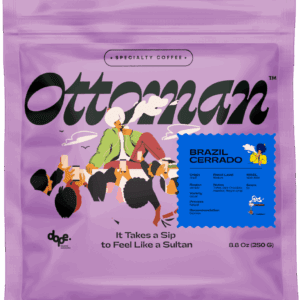Brazil Cerrado
EGP225,00 – EGP450,00Price range: EGP225,00 through EGP450,00Brazil Cerrado
Brazil Cerrado is known for its consistency, smoothness, and classic chocolate-nut flavor profile. Grown in the high-altitude plains of the Cerrado Mineiro region, this coffee offers a balanced and comforting cup with medium acidity, a round body, and lingering sweetness. It’s a go-to origin for those who love traditional, mellow coffee experiences.Origin: Brazil
Region: Cerrado Mineiro
Variety: Mundo Novo, Catuai
Process: Natural
Roast Level: Medium
MASL: 1000–1250
Notes: Chocolate, Hazelnut, Brown Sugar, Dried Fruits
Score: 84
Recommendation: Espresso
Colombia Castillo
EGP250,00 – EGP500,00Price range: EGP250,00 through EGP500,00Colombia – Castillo (Valle del Cauca)
This Castillo variety from Valle del Cauca is processed using a unique wet exothermic cherry method, unlocking a complex tropical profile. Expect a lively, juicy cup with notes of tropical fruits and citrus, balanced by silky milk caramel and a soft hint of oak. Ideal for filter brewing and flavor exploration.Origin: Colombia
Region: Valle del Cauca
Variety: Castillo
Process: Wet Exothermic Cherry
MASL: 1800–2000
Roast Level: Medium
Notes: Tropical Fruits, Milk Caramel, Tangerine, Oak
Recommendation: Filter
COLOMBIA DECAF RFA
EGP240,00 – EGP480,00Price range: EGP240,00 through EGP480,00Dark Roast
EGP175,00 – EGP349,00Price range: EGP175,00 through EGP349,00Dark Roast (75% Arabica and 25% Robusta)
Most of the world's Robusta is grown in Central and Western Africa, parts of Southeast Asia, including Indonesia and Vietnam, and in Brazil. Production of Robusta is increasing, though it accounts for only about 30% of the world market. The Robusta bean itself tends to be slightly rounder and smaller than an Arabica bean.
Dark Roast with Cardamom
EGP190,00 – EGP379,00Price range: EGP190,00 through EGP379,00Dark Roast with Cardamom (75% Arabica and 25% Robusta)
In the commercial coffee industry, there are two important coffee species — Arabica and canephora (Robusta) and each one of them have different specifications and properties.
ElSALVADOR SANTA LECTICIA
EGP300,00 – EGP600,00Price range: EGP300,00 through EGP600,00Espresso Classic Blend 80% Arabica
EGP165,00 – EGP329,00Price range: EGP165,00 through EGP329,00The history of espresso, as we know it today, dates back to the early twentieth century. In 1901, Luigi Bezzera made the first espresso coffee machine.
Ethiopia Guji
EGP350,00 – EGP700,00Price range: EGP350,00 through EGP700,00Ethiopia – Guji Hambela (Heirloom)
From the highlands of Guji Hambela, this Ethiopian Heirloom variety delivers an elegant and fragrant cup. Naturally processed and grown at high altitudes, it features vibrant notes of berries, sweet apricot, and delicate floral tones like orange blossom. A versatile and expressive coffee, perfect for both espresso and filter preparations.Origin: Ethiopia
Region: Guji Hambela
Variety: Heirloom
Process: Natural
MASL: 1400–1600
Roast Level: Medium
Notes: Berries, Floral, Apricot, Orange Blossom
Score: 88
Recommendation: Espresso & Filter Drinks








